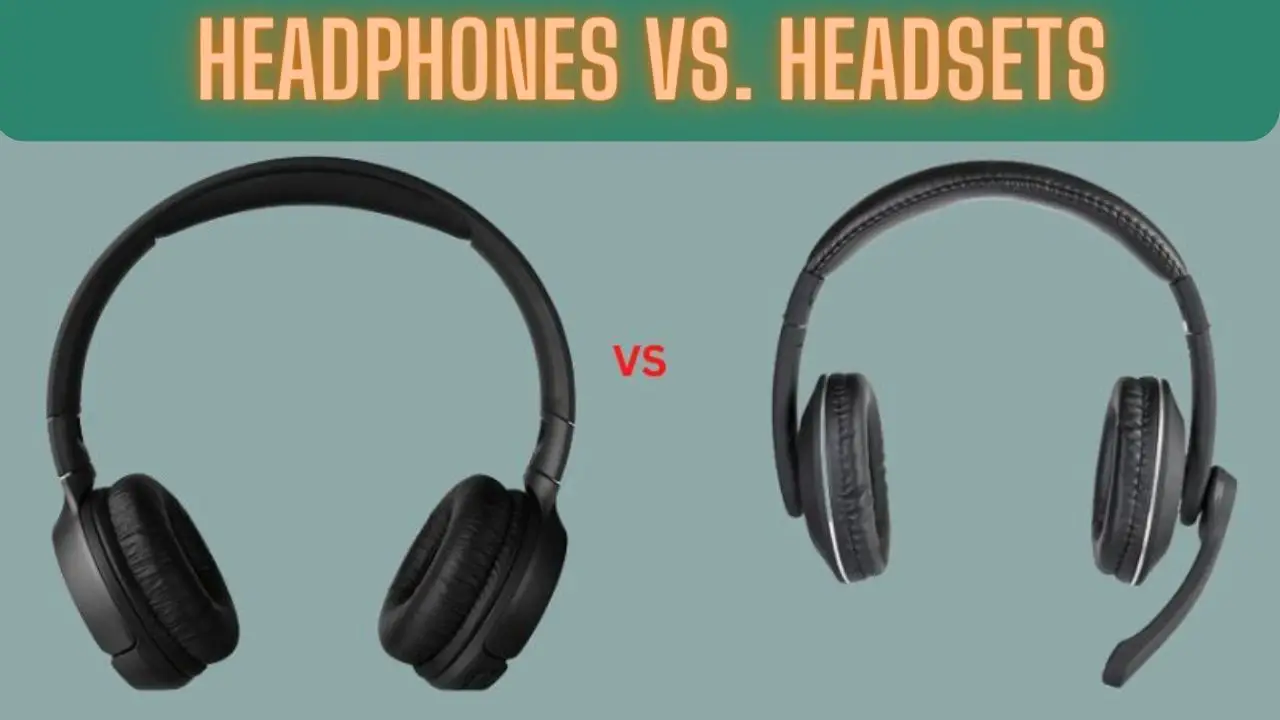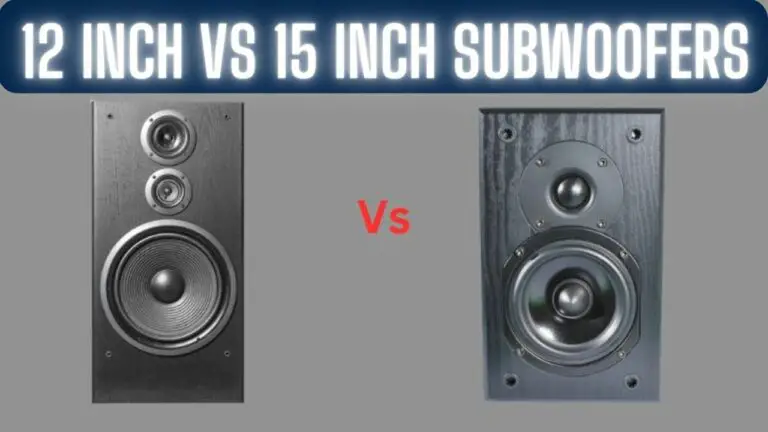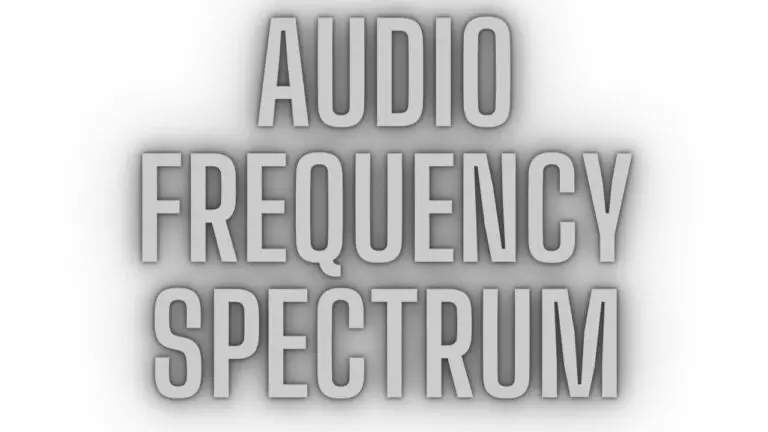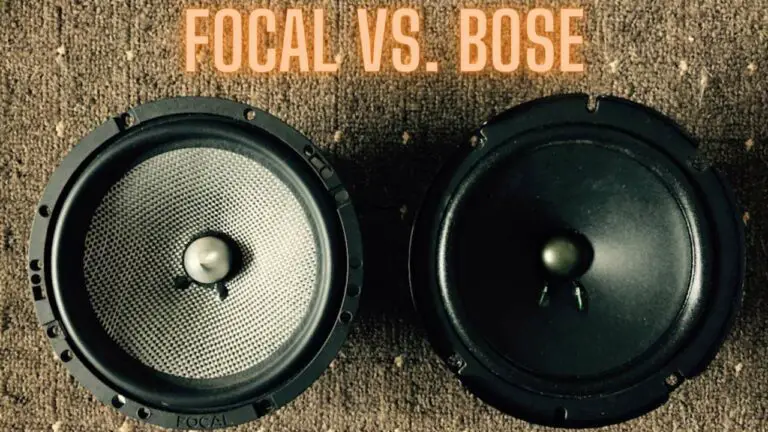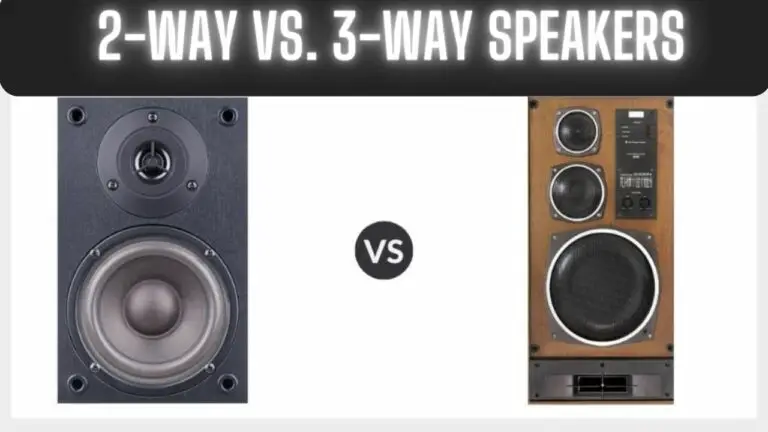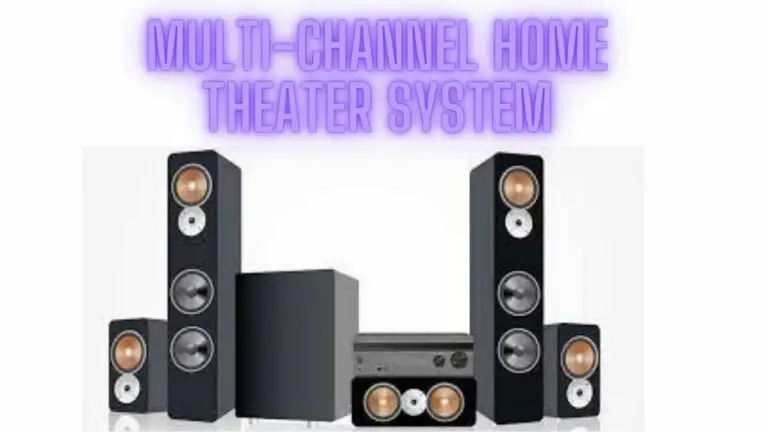Headphones vs. Headsets: Choosing the Right Audio Gear
Introduction
When it comes to personal audio, the choice between headphones and headsets can be a pivotal one, impacting your listening experience, work efficiency, and gaming adventures. Both options offer distinct advantages and are designed for specific purposes. In this article, we’ll delve into the differences between headphones and headsets to help you make an informed decision.
Headphones:
1. Audio Quality:
- Headphones prioritize audio quality above all else. They are designed to deliver the best possible sound, making them ideal for audiophiles, music professionals, and anyone who values pristine audio reproduction.
2. Design and Comfort:
- Headphones often have larger, over-ear or on-ear cups that fully enclose your ears. This design minimizes external noise and provides comfort for long listening sessions.
3. Use Cases:
- Headphones are versatile and suitable for a wide range of applications, including music listening, watching movies, editing audio, and general daily use.
4. Microphone:
- Most traditional headphones do not include a built-in microphone, so they may not be the best choice for voice calls or gaming unless you purchase a separate microphone.
5. Style and Portability:
- Headphones come in various styles, from sleek and minimalistic to bold and stylish. While they can be portable, they are typically less compact than in-ear options.
Headsets:
1. Audio and Communication:
- Headsets are designed for clear communication as well as audio playback. They feature a built-in microphone, making them ideal for voice calls, online gaming, and video conferencing.
2. Gaming Focus:
- Gaming headsets are tailored for gamers, with features like surround sound, noise cancellation, and customizable lighting. They often prioritize positional audio to enhance the gaming experience.
3. Comfort During Extended Use:
- Gaming headsets are engineered for long gaming sessions, offering plush padding and ergonomic designs for maximum comfort.
4. Use Cases:
- Headsets are specifically built for activities where communication plays a crucial role, such as multiplayer gaming, virtual meetings, and customer service jobs.
5. Audio Quality Trade-Off:
- While some gaming headsets offer impressive audio quality, they may not match the audio fidelity of high-end headphones dedicated solely to music and audio production.
Differences between Headphones vs. Headsets
Headphones and headsets are both audio devices worn on or around the head, but they serve different purposes and come with distinct features. Here are the key differences between headphones and headsets:
- Definition and Purpose:
- Headphones: Headphones are audio devices designed primarily for listening to music, podcasts, audio books, or other forms of audio entertainment. They focus on delivering high-quality sound reproduction to the wearer without incorporating a microphone.
- Headsets: Headsets are audio devices that combine headphones with an integrated microphone. They are commonly used for communication purposes, such as making phone calls, participating in online meetings, gaming, or voice chatting while gaming.
- Components:
- Headphones: Headphones consist of two earpieces connected by a headband or neckband. They focus solely on delivering audio output to the wearer and do not include a microphone.
- Headsets: Headsets include headphones with an attached microphone, either as a boom microphone extending from one of the earpieces or as an integrated microphone located near the earpieces. This allows users to both listen to audio and communicate via voice.
- Usage Scenarios:
- Headphones: Headphones are suitable for a wide range of audio-related activities, including music listening, watching movies, gaming, and immersive audio experiences. They are preferred by individuals who prioritize audio quality and immersive sound.
- Headsets: Headsets are commonly used in scenarios that require both audio output and input, such as online gaming, video conferencing, customer service roles, and voice communication in noisy environments. They are favored by gamers, professionals, and individuals who need to communicate while multitasking.
- Features and Controls:
- Headphones: Headphones may feature controls for adjusting volume, playback, and other audio settings. They may also include features like noise cancellation, Bluetooth connectivity, and customizable sound profiles.
- Headsets: In addition to audio controls, headsets typically include controls for managing the microphone, such as muting or adjusting microphone sensitivity. Gaming headsets may also feature additional controls for game audio, chat volume balancing, and other gaming-specific functions.
- Comfort and Design:
- Headphones: Headphones come in various designs, including over-ear, on-ear, and in-ear styles, each offering different levels of comfort and fit. They prioritize comfort for extended listening sessions and may feature ergonomic designs with padded ear cushions and adjustable headbands.
- Headsets: Like headphones, headsets come in different styles and designs to accommodate user preferences. Comfortable fit is crucial for headsets, especially during prolonged wear for communication purposes. Some headsets feature adjustable microphones or retractable microphone booms for added convenience.
- Price Range:
- Headphones: Headphones are available in a wide price range, from budget-friendly options to high-end models with advanced features and premium audio quality. Prices vary depending on factors such as brand, build quality, sound performance, and additional features.
- Headsets: Headsets generally fall within a similar price range as headphones of comparable quality. However, headsets with specialized features for gaming or professional use may be priced slightly higher due to additional functionalities such as noise-canceling microphones and customizable audio settings.
Understanding these differences can help individuals choose the most suitable audio device based on their specific needs, whether it’s immersive music listening, clear communication during gaming, or professional voice calls in the workplace.
Choosing the Right Option:
To determine whether headphones or headsets are the better choice for you, consider your primary use cases:
- For Music and Audio Quality: If you prioritize audio quality and intend to use your audio gear primarily for music, audio editing, or studio work, high-quality headphones are the way to go. Look for audiophile-grade options with excellent sound reproduction.
- For Gaming and Communication: If you’re a gamer, remote worker, or someone who needs clear communication during calls and virtual meetings, a gaming headset or a general-purpose headset with a good microphone is the more practical choice.
- For Versatility: If you want a versatile solution that can handle both audio quality and communication, consider investing in both high-quality headphones and a separate microphone. This way, you can enjoy the best of both worlds.
- For On-the-Go Use: If you’re often on the move and need portable audio gear, in-ear headphones or true wireless earbuds might be a better fit due to their compact size and convenience.
Headphone & Headset Technologies
Headphone and headset technologies have evolved significantly over the years, leading to improved audio quality, comfort, and functionality. Here are some key technologies and features commonly found in modern headphones and headsets:
1. Active Noise Cancellation (ANC):
- ANC technology uses microphones to pick up external sounds and then generates sound waves that are the exact opposite (anti-phase) to cancel out noise. This feature is particularly useful for blocking out background noise during travel or in noisy environments.
2. Bluetooth and Wireless Connectivity:
- Many headphones and headsets now offer wireless connectivity through Bluetooth technology. This allows for convenient, cord-free listening and hands-free communication. Bluetooth headphones and headsets come in various versions, with the latest offering improved range and energy efficiency.
3. Voice Assistant Integration:
- Headphones and headsets can integrate with voice assistants like Siri, Google Assistant, and Amazon Alexa. Users can control music playback, answer calls, and access information using voice commands.
4. High-Resolution Audio (Hi-Res Audio):
- Hi-Res Audio technology delivers audio with higher fidelity and greater detail compared to standard audio formats. It typically supports a wider frequency range and bit depth, resulting in more accurate sound reproduction.
5. Surround Sound and Virtual Surround Sound:
- Gaming headsets often incorporate surround sound technologies, like Dolby Atmos or DTS:X, to create a more immersive gaming experience. These technologies provide positional audio cues, allowing gamers to pinpoint the direction of in-game sounds.
6. Customizable EQ Settings:
- Many headphones and headsets come with customizable equalizer (EQ) settings. Users can adjust the EQ to fine-tune the sound profile to their preferences, emphasizing bass, treble, or midrange frequencies.
7. Touch Controls and Gesture Recognition:
- Some high-end headphones feature touch-sensitive controls on the ear cups, allowing users to adjust volume, skip tracks, and answer calls with simple gestures.
8. Biometric Sensors:
- Some fitness-oriented headphones incorporate biometric sensors, such as heart rate monitors, into the design. These sensors track various health metrics during workouts.
9. Multipoint Connectivity:
- This technology allows headphones or headsets to connect to multiple devices simultaneously, making it convenient for users who switch between devices like smartphones, tablets, and computers.
10. Bone Conduction Technology:
Some specialized headsets and headphones use bone conduction technology, which transmits sound vibrations through the bones in the skull directly to the inner ear. This is particularly useful for outdoor activities where the ears need to remain open for situational awareness.
11. Foldable and Collapsible Designs:
Many portable headphones and headsets feature foldable or collapsible designs for easy storage and transport.
12. Smart Features:
Smart headphones may include features like auto-pause when removed from the ears, auto-playback when put back on, and the ability to detect user gestures and adapt playback accordingly.
13. Fast Charging and Long Battery Life:
Rapid charging capabilities and extended battery life are essential features for wireless headphones and headsets, ensuring that users can enjoy extended listening or gaming sessions without frequent recharging.
14. Water Resistance and Durability:
For sports and outdoor activities, headphones and headsets may be designed with water resistance and durability in mind to withstand sweat and environmental conditions.
As technology continues to advance, expect to see more innovations and improvements in the world of headphones and headsets. These developments aim to provide users with better audio quality, convenience, and functionality across a wide range of applications, from music listening to gaming to fitness tracking.
Headphones vs. Headsets FAQS
What are headphones, and how are they different from headsets?
- Headphones are audio devices designed primarily for listening to music, podcasts, or other audio content. They focus on delivering high-quality audio but typically do not include a built-in microphone for voice communication.
- Headsets are audio devices that combine headphones with a built-in microphone, designed for activities like voice calls, online gaming, and virtual meetings.
What are the advantages of using headphones?
Headphones are known for their superior audio quality, making them ideal for music enthusiasts, audio professionals, and anyone who values clear and immersive sound.
What are the advantages of using headsets?
Headsets excel in voice communication, making them suitable for activities like online gaming, voice calls, and video conferencing. They include a microphone for clear and convenient voice input.
Can I use headphones for voice calls or gaming?
While headphones can be used for voice calls and gaming, they lack a built-in microphone. To use headphones for these purposes, you would need to purchase a separate external microphone.
Are gaming headsets only for gamers?
Gaming headsets are optimized for gaming but can also be used for other applications, such as voice calls and virtual meetings. Their built-in microphones and features like noise cancellation can be valuable in various scenarios.
Do headphones and headsets come in different styles?
Yes, both headphones and headsets come in various styles, including over-ear, on-ear, and in-ear options. The choice of style depends on personal comfort and intended use.
Can I use headphones or headsets wirelessly?
Yes, both headphones and headsets are available with wireless connectivity options, typically using Bluetooth technology. Wireless models provide freedom of movement and convenience.
What is the difference between open-back and closed-back headphones and headsets?
- Open-back headphones and headsets have open ear cups that allow some sound leakage. They often provide a more spacious soundstage but offer less noise isolation.
- Closed-back headphones and headsets have sealed ear cups that provide better noise isolation, making them suitable for use in noisy environments.
Are there noise-canceling headphones and headsets available?
Yes, both noise-canceling headphones and headsets are available. These models use active noise cancellation (ANC) technology to reduce or eliminate ambient noise, providing a quieter and more focused listening or communication experience.
What should I consider when choosing between headphones and headsets?
Consider your primary use cases. If you prioritize high-quality audio for music and entertainment, headphones are a better choice. If you need clear voice communication for activities like gaming and virtual meetings, a headset is more suitable.
Can I find headphones or headsets with customizable features like EQ settings or touch controls?
Yes, many modern headphones and headsets offer customizable features like EQ settings, touch controls, and app integration, allowing you to fine-tune your audio experience to your preferences.
Are there wireless headphones and headsets suitable for sports and fitness activities?
Yes, there are wireless headphones and headsets designed for sports and fitness. They often feature secure fits, water resistance, and fitness tracking capabilities to enhance your workouts.
What is the price range for headphones and headsets?
The price of headphones and headsets varies widely based on factors like brand, features, and audio quality. You can find budget-friendly options as well as high-end models with premium features.
Conclusion
Ultimately, the choice between headphones and headsets depends on your specific needs and priorities. Both options offer excellent audio experiences, so pick the one that aligns with your lifestyle and intended use.

